While Achates is sent to find the Cumaean Sibyl (34-5), Aeneas and two attendants approach the Temple of Apollo (9-13). In Vergil's description, the temple, built by Daedalus, has intricately decorated doors that tell the myth of the Minotaur (14-34), but since it is very difficult to fit that much detail on a set of doors in an image this size, the illustrators chose to show the scenes as a mural on the walls of the temple, similar to Juno's temple in Carthage (I 441-493). The scenes have been illustrated generally from right to left.
To the right of the door, in the lower right panel, the Minoan prince Androgeos is killed by an Athenian (20). In the panel to the left of it, several Athenians stand with arms drawn, apparently preparing for a fight, though it would be more accurate to depict them drawing lots, not swords, in order to be sent to Crete as tributes (20-2). In the upper right panel, Pasiphae stands next to a bull and lifts her skirt, a chaste rendering of the scene described by Vergil (24-5). In the upper left, the Minotaur, son of Pasiphae and the bull, who is depicted as much more bull than human, appears to hold a defeated victim in his mouth; an armed warrior, probably Theseus, prepares to fight the beast (25-30).
These are the only four scenes described by Vergil, who interrupts Aeneas's perusal of the artwork when the Sibyl arrives (34-5), but since he explicitly states that the rest of the myth is depicted (33-4), the illustrators finish the myth in four more panels to the left of the door. In the upper right panel, Theseus arrives home in Athens after slaying the Minotaur; King Aegeus, who thinks Theseus has died, prepares to throw himself off a cliff. In the upper left panel, Daedalus and Icarus are locked in the Labyrinth with little hope of escaping. In the lower right panel, Daedalus and Icarus escape the Labyrinth with bronze wings that Daedalus has created; Icarus appears to be flying upward, a prediction of his mistake in flying too close to the sun. The death of Icarus is not portrayed, because according to Vergil, it was too painful for Daedalus to carve (30-2). Instead, the fourth panel, in the lower left, depicts Daedalus, who has finally arrived safely on land at Cumae, consecrating a shrine to Apollo [Sol], and giving the bronze wings as the first dedication at the shrine (18-9). (Katy Purington)
Woodcut illustration from the “Strasbourg Vergil,” edited by Sebastian Brant: Publii Virgilii Maronis Opera cum quinque vulgatis commentariis expolitissimisque figuris atque imaginibus nuper per Sebastianum Brant superadditis (Strasbourg: Johannis Grieninger, 1502), fol. 253r, executed by an anonymous engraver under the direction of Brant.


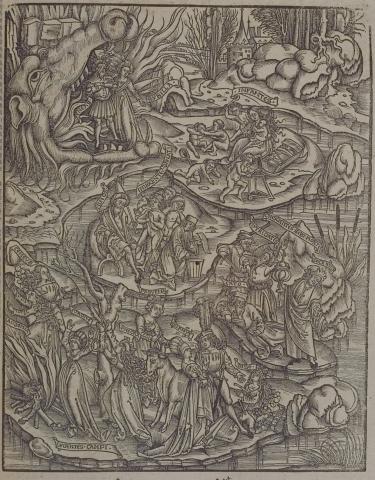
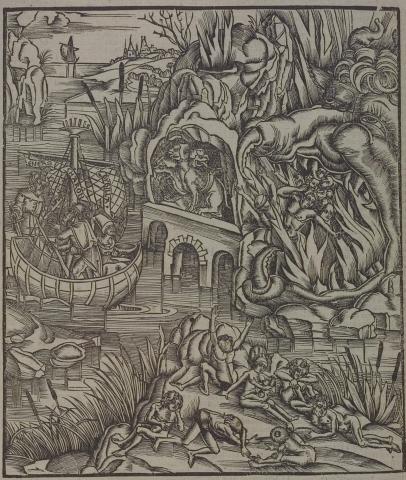
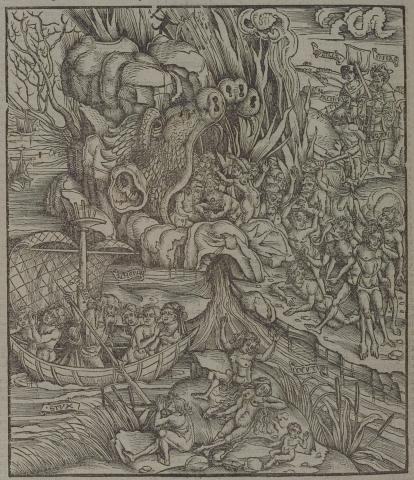

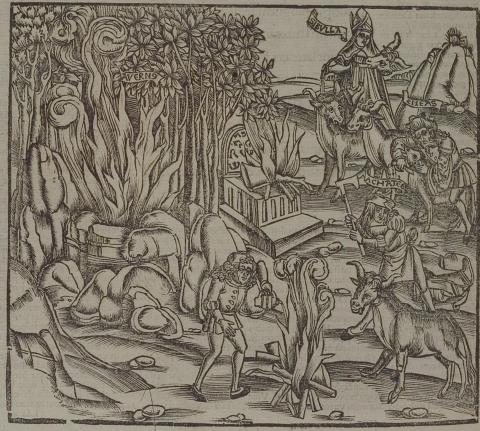
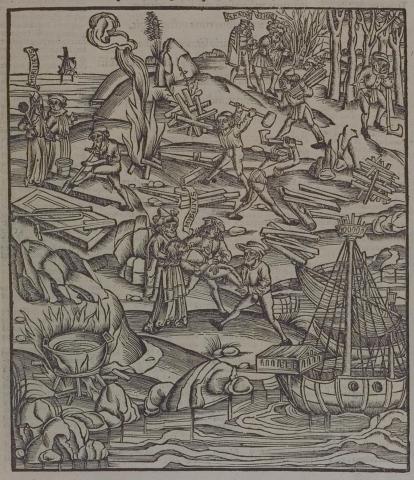


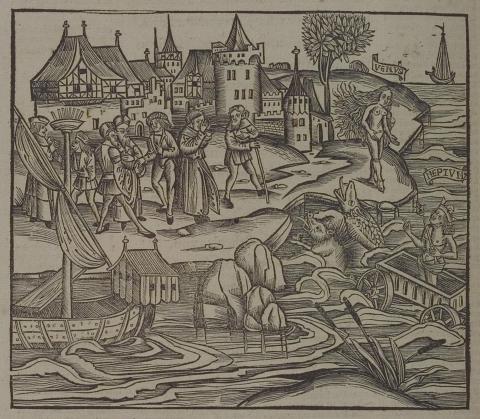
Sebastian Brant (1458-1521) was a humanist scholar of many competencies. Trained in classics and law at the University of Basel, Brant later lectured in jurisprudence there and practiced law in his native city of Strasbourg. While his satirical poem Das Narrenschiff won him considerable standing as a writer, his role in the transmission of Virgil to the Renaissance was at least as important. In 1502 he and Strasbourg printer Johannes Grüninger produced a major edition of Virgil’s works, along with Donatus’ Life and the commentaries of Servius, Landino, and Calderini, with more than two hundred woodcut illustrations. (Annabel Patterson)